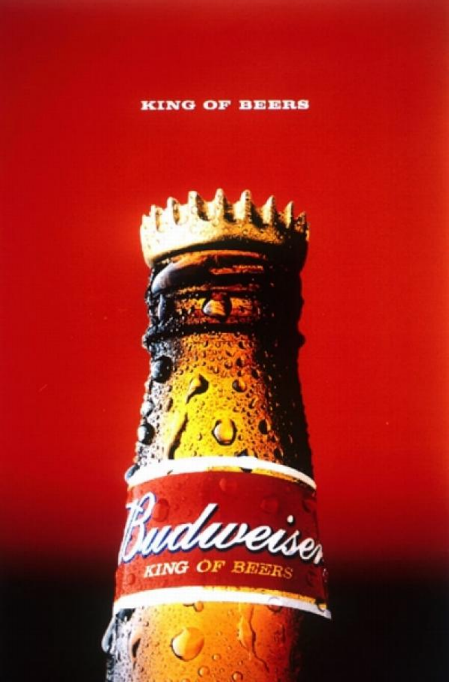When it comes to ensuring the commercial/aesthetic appeal of an advertised product, it is crucially important to remain thoroughly aware of what accounts for the specifics of the targeted audience’s consumer-behavior. In their turn, these specifics are best discussed within the context of how the targeted consumers’ cultural affiliation affects their cognitive leanings/existential attitudes, in general, and their purchasing decision-making, in particular (Mooij 2007, p. 27).
It is understood, of course, that this suggestion contradicts the assumption that, due to the rise of Globalization, the qualitative aspects of people’s consumerist behavior in different parts of the world grow increasingly unified. Hence, a ‘universalist’ theory of marketing, which implies that there is not much of a sense in adjusting advertisement-campaigns to be fully observant of how targeted buyers tend to perceive the surrounding reality.
This theory, however, cannot be referred to as such that represents an undisputed truth-value. The reason for this is simple – despite an ongoing economic Globalization, there is a plenty of evidence that the manner, in which consumers perceive the actual value of advertised goods and services, continues to be highly reflective of what happened to be the particulars of these people’s culturally defined ‘brain wiring’.
In my paper, I will aim to substantiate the validity of this thesis at length, in regards to the American (Western) and Korean (Oriental) advertisement-posters of beer, seen bellow:

“Appreciation unfolds in the morning!”

“King of beers”
Semiotic analysis
American (Western)
Semantics. The advertisement-message, conveyed by American poster is clearly object-oriented. The depicted bottle of beer is meant to emphasize both: the promoted beverage’s coldness/tastefulness and the fact that it is specifically Budweiser that ‘reigns’ over the rest of the beer-brands.
This is also the reason why the bottle’s lid is flipped upside down – it makes the bottle appear as if it was wearing a ‘crown’. The bottle of Budweiser beer is situated at the poster’s very center, which increases the extent of viewers’ emotional/cognitive comfortableness with the conveyed message even further.
Syntactics. The typed message, seen above the depicted object, thoroughly correlates with the poster’s visual semiotics, because it does encourage consumers to assume that in the ‘world of beer’, Budweiser dominates.
The message’s strongly defined affirmativeness does not provide observes with much of a liberty to interpret the promoted idea’s ideological connotation.
Pragmatics. The pragmatic subtleties of this particular advertisement-poster are concerned with the poster’s assumed ability to encourage beer-consumers to believe that, by drinking Budweiser beers they become ‘empowered’.
This, of course, increases the emotional appeal of the Budweiser beer-brand to American (Western) audiences even further, because they predominantly consist of people endowed with the so-called ‘Faustian’ (domination-seeking) mentality (Greenwood 2009, p. 53).
Korean (Oriental)
Semantics. The overall message, conveyed by Korean poster, is best defined as a context-oriented. That is, by observing this poster, consumers are expected to think of the actual reason why they drink beer, as such that is being concerned with helping them to explore their individuality, rather than with allowing them to experience a purely sensory pleasure.
This is exactly the reason why the image of a smiling young woman clearly dominates the poster and why the advertised bottle of beer is situated at the poster’s bottom-right corner.
Syntactics. The typed message, seen in this poster, appears context-oriented, as well. This is because it merely encourages potential consumers to establish a dialectical link between the notions of ‘appreciation’ and ‘beer’, without forcing the audience’s members to assume that such a link exists de facto. As such, it is being fully consistent with the poster’s visual semiotics.
Pragmatics. While exposed to this poster, potential consumers are expected to consider the possibility that, by drinking the advertised beer, they will be able to substantially increase the sheer intensity of their perception of the surrounding reality’s emanations, which in turn will make them more appreciative of their life-experiences.
This implies that the poster is being fully attuned to the workings of the so-called ‘Apollonian’ (Oriental psyche), concerned with Oriental people’s strive to coexist with the nature peacefully, rather than with trying to dominate it (Greenwood, p. 54).
Overt vs covert messages
American (Western)
As it was implied earlier, the commercial appeal of American advertisement-poster reflects the designers’ awareness of the fact that the foremost psychological trait, on the part of the targeted audience’s members, is their deep-seated anxiety to dominate others. In its turn, this explains why the overt messages, conveyed by this poster (such as the logo ‘king of beers’), exploit the ‘appeal to masculinity’.
Nevertheless, there are also a number of covert (subliminal) overtones to this particular appeal. For example, the color of the poster’s background is dark-red, which is supposed to evoke in potential consumers the image of the ancient Roman god of war Mars. The poster’s vertically-aligned format is clearly reminiscent of the notion of hierarchy, which has traditionally been associated with the notion of masculinity.
Apparently, while exposed to this poster, male beer-lovers are expected to grow increasingly comfortable with the idea that by drinking Budweiser beer, they will be more likely to attain a social prominence in male-dominated societies.
Moreover, because the bottle of Budweiser beer, depicted in the poster, appears visually subliminal of an erect penis, the targeted buyers’ prolonged exposure to it will inevitably result in encouraging them to think that the consumption of Budweiser beer, on their part, is the direct pathway towards ensuring the undermined integrity of their sexual powers.
Korean (Oriental)
Even though that, formally speaking, Korean poster does convey the overt message that the activity of drinking beer does make people more appreciative of the surrounding reality, the actual appeal of this poster is concerned with the sheer potency of the promoted message’s covert undertones.
Apparently, poster’s designers never ceased being fully aware of the fact that, while deciding in favor of buying a particular product, Orientals tend to act in an essentially intuitive manner (Norenzayan et al. 2002, p. 653). The validity of this statement can be well illustrated in regards to the poster’s horizontally-aligned format, which correlates with these people’s tendency to think and act ‘holistically’ – that is, without trying to exercise a ‘hierarchic’ control over the surrounding reality.
The large image of a smiling young woman, contained in the poster, encourages onlookers to think of the process of consuming alcoholic beverages in terms of a ‘relaxation’, rather than in terms of an ‘aggression’. The poster’s blue-colored background emphasizes this particular perceptual aspect even further.
Because poster’s designers knew perfectly well that it is in the very nature of the targeted audience’s members to contextualize informational inputs, they made a deliberate point in downsizing the advertised product visually and in placing it in the poster’s right-bottom corner.
By doing it, they succeeded in confirming the potential consumers’ intuitive insight that the consumption of alcoholic beverages cannot be thought of as ‘thing in itself’ (as Westerners tend to do), but rather as something that makes one more emotionally comfortable, while socializing with others.
In light of what has been said earlier, it will only be logical to suggest that, when it comes to advertising commercial products, meant to appeal to Western audiences, on the one hand, and to Oriental audiences, on the other, advertisers should remain observant of the following:
Westerners tend to cognitively subjectualize themselves within the surrounding social/natural environment. As Bower (2000) noted, “In a variety of reasoning tasks… (Westerners) adopt an ‘analytic’ perspective. They look for the traits of objects while largely ignoring their context” (p. 57). In its turn, this implies that the marketing campaigns, aimed at Westerners, should provide would-be-consumers with a rationale-based reason to purchase the advertised products.
Orientals tend to think of themselves in terms of the surrounding reality’s integral part. Hence, the Orientals’ culturally predetermined tendency to think of causes and effects, as such that derive out of each other cyclically (contextually) rather than linearly (Masuda et al. 2008, p. 1265).
What it means is that, while trying to make a particular product emotionally appealing to Oriental consumers, advertisers should focus on emphasizing this product’s ability to help the targeted buyers to celebrate their existential self-identity.
The earlier conducted semiotic analysis of both posters points out to the fact that, contrary to the provisions of a ‘universalist’ marketing theory, consumers’ ethno-cultural affiliation does play an important role in how they perceive the de facto relevancy of commercial advertisements.
Therefore, even though that the application of Maslow’s ‘theory of needs’ (within the context of designing marketing-strategies) continues to remain fully appropriate, marketers should never cease being aware of the fact that consumers’ first-order, second-order and third-order priorities cannot be discussed outside of what happened to be the particulars of the concerned individuals’ cultural leanings.
The same analysis also suggests that, in order for a particular advertisement to be considered fully effective, it must be ‘covertly sound’ – that is, potential buyers should not only be in a position to recognize the legitimacy of the conveyed message consciously, but also unconsciously. In its turn, this again implies that it represents the matter of a crucial importance for marketers to be able to understand what account for the workings of the targeted audience’s ‘collective psyche’.
As it was shown throughout the course of this paper’s Analytical part, there is nothing accidental about the fact that, despite being concerned with advertising the same line of products (beer), the analyzed American and Korean posters do not correlate with each other semiotically. This is because they were designed to appeal to the groups of people, who due to the characteristics of their cultural affiliation, differ in how they indulge in cognitive processes.
Thus, it will be only logical to reinstate once again that there can indeed be very little uniformity to the deployment of marketing strategies in different parts of the world. I believe that this conclusion fully correlates with the paper’s initial thesis.
References
Bower, B 2000, ‘Cultures of reason’, Science News, vol. 157 no. 4, pp. 56-58.
De Mooij, M 2004, Consumer behavior and culture: consequences for global marketing and advertising, Sage Publications, Thousand Oaks.
Greenwood, S 2009, Anthropology of magic, Berg Publishers, Oxford.
Masuda, T, Gonzales, R, Kwan, L & Nisbett, R 2008, ‘Culture and aesthetic preference: comparing the attention to context of East Asians and Americans’, Personality and Social Psychology Bulletin, vol. 34 no. 9, pp. 1260-1275.
Norenzayan, A, Smith, E, Beom, J & Nisbett, R 2002, ‘Cultural preferences for formal versus intuitive reasoning’, Cognitive Science, vol. 26 no. 5, pp. 653-684.